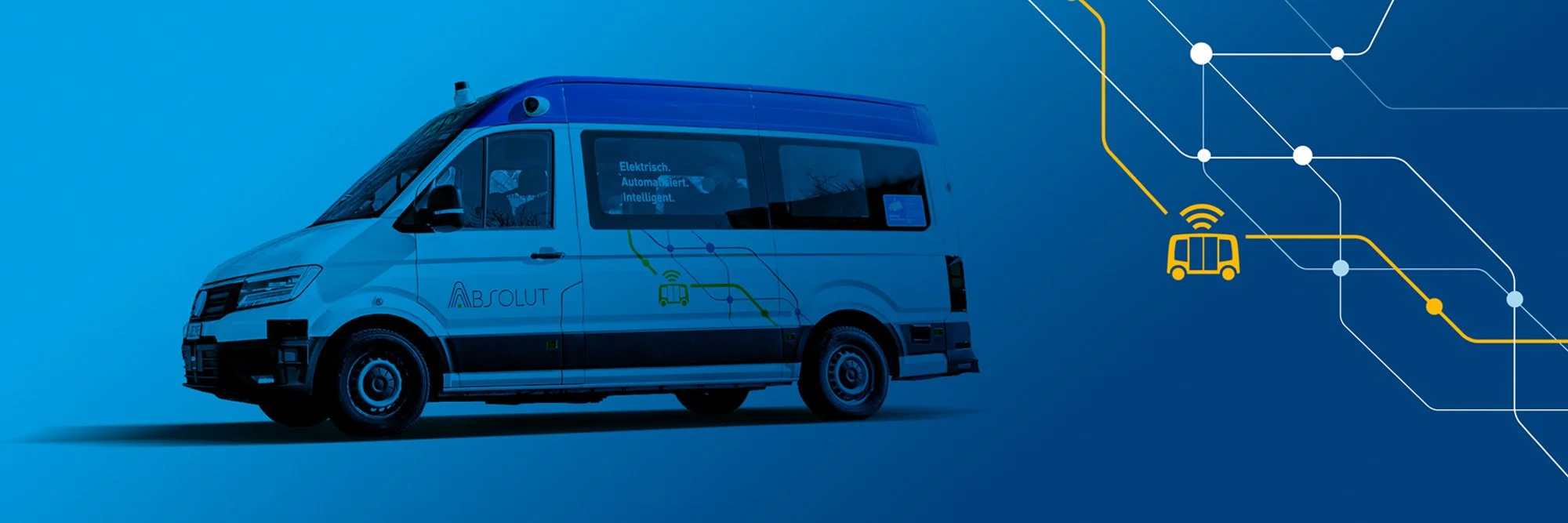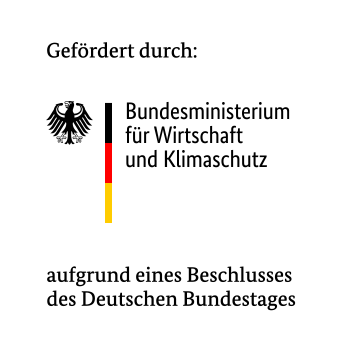
Bus Shuttle with Teleoperation
ABSOLUT 2 – Bus Shuttle with Teleoperation
The follow-up project builds on the experiences and results of the previous project ABSOLUT and focuses on the central challenge of replacing the safety driver in the vehicle with a stationary Technical Supervisor (TS) – also known as Teleoperator – in a control center in accordance with the requirements of the Autonomous Driving Law (GAF). The main goal is to provide the necessary infrastructure for remote vehicle access while realizing the necessary interfaces between the various system components (including vehicle, control center, infrastructure).
These measures are intended to create the possibility for one person to monitor and operate multiple vehicles simultaneously. This allows for efficient scaling and broader application of automated public transportation, resulting in economic value. Thus, the project aims to elevate the technology to a level where a more comprehensive integration of autonomous vehicles into public transportation is possible while ensuring compliance with safety standards according to legal requirements.
Sedenius Focus Areas
Vehicle AD Representation for the TS / Teleoperator (TO)
Continuous transmission of the environmental model to the control center and the TS/TO ensures a representation of infrastructure objects in the graphical user interface (GUI) of the Teleoperator (TS/TO) . Relevant information about the vehicle’s surroundings is transmitted to the control center in real-time and represented in the Teleoperator (TS/TO) GUI. Additionally, the transmission of situational understanding to the control center for Teleoperator (TS/TO) allows for a representation of relevant parts of the Automated Driving System (ADS) in the application for the Teleoperator (TS/TO) . This includes continuous updating of information about the vehicle’s state and its surroundings (environmental model, maneuver interface, robust layers).
Prototypical Maneuvers through Maneuver Configuration and approval, incl. Tests
An interactive environmental model with a user interface in the ABSOLUT test field enables the configuration, transmission, and execution of maneuvers. An interactive environmental model is created, allowing for the control of the vehicle in the ABSOLUT test field. The development of a maneuver interface considers latencies in the transmission path via drive-by-wire. This includes monitoring the transmission path, providing feedback on transmission quality to the user interface, and feedback from the control component to the user interface. For indirect maneuvers, a safe trajectory is created and implemented by an underlying driving function. This enables the realization of safe maneuvers where the driving function ensures safe execution.
Development of a Maneuver Interface
The development of the maneuver interface focuses on various aspects. The definition of the vehicle-side interface as well as the determination of requirements for the Teleoperator (TS/TO) workstation and communication form the fundamental cornerstones. Besides implementation, the aspect of universality of the interface needs to be considered, and various stakeholders should be integrated into the definition process to incorporate their requirements.
Vehicle Fallback Layer with Maneuver Plausibility
Continuous monitoring of the vehicle’s surroundings is crucial. This involves the development and testing of an algorithm for efficient environmental perception, including a targeted selection of collision-relevant objects. Intention and motion prediction of objects is based on a comprehensive understanding of the current situation. This includes determining key data for evaluating collision risks and restricting maneuver primitives based on these insights.The implementation of path-following control involves translating the trajectory into longitudinal and lateral control. Collision-free paths and trajectories are planned considering dynamic objects within the maneuver corridor. Additionally, the design and implementation of a following control encompass continuous state monitoring and system plausibility. Integration of test functions allows for gradual autonomous commissioning, while defined test scenarios enable the validation of algorithms and the definition of metrics for evaluating control algorithms. Redundant collision avoidance focuses on reducing the environmental model and generating trajectories to transition the vehicle into a minimally risky state. Robust control algorithms are designed and implemented, and test scenarios validate the algorithms. Metrics are defined with a focus on risk minimization.
Fact sheet
| Funding | Bundesministerium für Wirtschaft und Klimaschutz (BMWK), Strategisches Einzelprojekt „IKT für Elektromobilität 5“ |
| Term | 01.10.2023 – 30.09.2026 |
| Project partner | ANavS Gmbh, BitCrtl Systems GmbH, FSD – Zentrale Stelle, glts cotech GmbH, IKEM – Institut für Klimaschutz, Energie und Mobilität, INIT GmbH, Leipziger Verkehrbetriebe GmbH, Stadt Leipzig, Technische Universität Dresden The associated partners Leipziger Messe GmbH and BMW Group Werk Leipzig supported the project from a user perspective. |
| Consortium leader | Leipziger Verkehrsbetriebe (LVB) GmbH |
| Budget | Total volume ca. 12 Mio. € |
